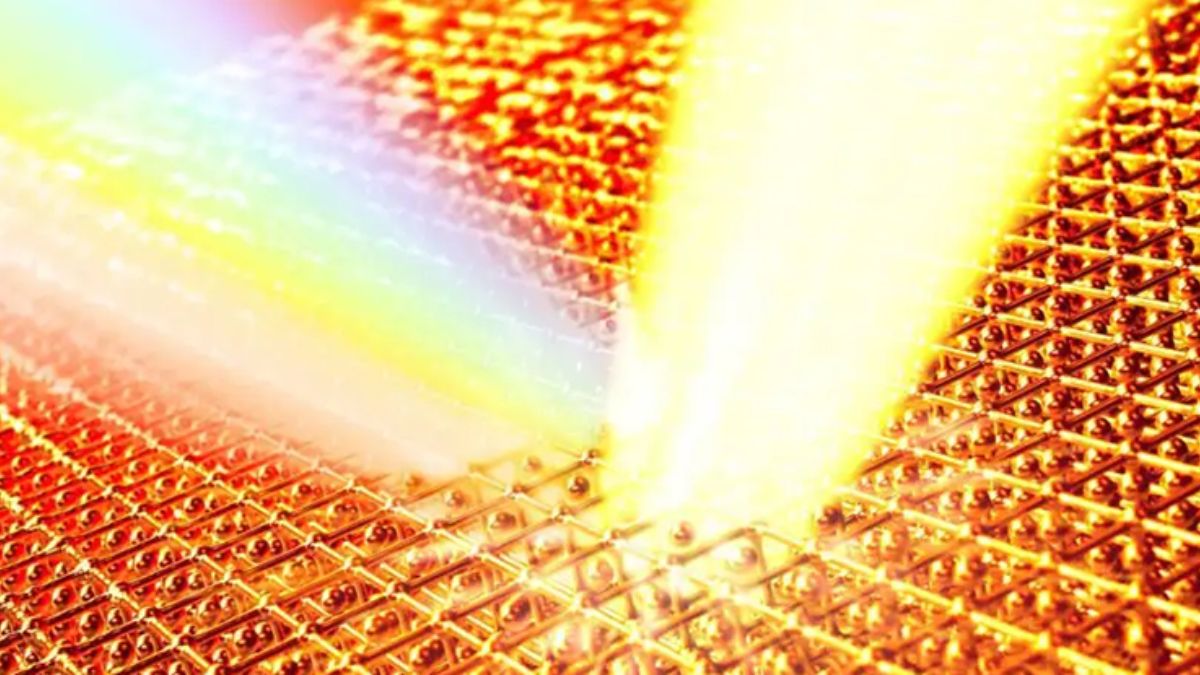Science
Scientists Heat Gold to 14 Times Melting Point in Breakthrough Study

In a remarkable experiment, scientists have demonstrated that gold can remain solid at temperatures exceeding its melting point by a staggering factor of 14. Conducted using rapid laser bursts, this study challenges long-standing beliefs about the behavior of materials under extreme heat. By pushing gold to temperatures of approximately 19,000 Kelvin, researchers observed a phenomenon known as superheating, where the heat application occurs so swiftly that atoms do not have sufficient time to rearrange into a liquid state.
The research, highlighted by Science Alert, revealed that gold’s atomic structure effectively resisted melting, absorbing heat more rapidly than expected. For a brief duration of just 2 picoseconds, the metal maintained its solid form, contradicting the traditional understanding that solids cannot endure temperatures beyond three times their melting point. This experiment utilized advanced techniques, including X-ray reflections, to accurately track heat absorption and observe the behavior of gold at these unprecedented temperatures.
Implications for Material Science
While these findings do not alter the established laws of thermodynamics, they suggest that such principles may not fully apply in ultra-fast reactions, where atomic rearrangement is inhibited by rapid heating. The results indicate that under extreme conditions, materials like gold can resist melting for very brief moments, opening new avenues for research into the behavior of solids. The question now arises: could other materials exhibit similar resilience to melting?
The implications of this research extend beyond academic curiosity. Understanding how gold and potentially other materials withstand extreme temperatures could have significant ramifications for various fields, including aerospace, where materials are exposed to extreme conditions, and nuclear energy, where stability under high heat is crucial. The findings may also inform our understanding of natural phenomena, such as the impact of asteroids, where high-energy collisions could challenge material integrity.
As scientists further investigate the limits of material behavior, they are prompted to reconsider the fundamental principles governing melting points. This groundbreaking study raises a compelling question: how hot can a material be heated before it melts? The exploration of this frontier may redefine our understanding of matter and its remarkable capabilities under extraordinary circumstances.
-

 World4 months ago
World4 months agoSBI Announces QIP Floor Price at ₹811.05 Per Share
-

 Lifestyle4 months ago
Lifestyle4 months agoCept Unveils ₹3.1 Crore Urban Mobility Plan for Sustainable Growth
-

 Science4 months ago
Science4 months agoNew Blood Group Discovered in South Indian Woman at Rotary Centre
-

 World4 months ago
World4 months agoTorrential Rains Cause Flash Flooding in New York and New Jersey
-

 Sports4 months ago
Sports4 months agoBroad Advocates for Bowling Change Ahead of Final Test Against India
-

 Top Stories4 months ago
Top Stories4 months agoKonkani Cultural Organisation to Host Pearl Jubilee in Abu Dhabi
-

 Science4 months ago
Science4 months agoNothing Headphone 1 Review: A Bold Contender in Audio Design
-

 Top Stories4 months ago
Top Stories4 months agoAir India Crash Investigation Highlights Boeing Fuel Switch Concerns
-

 Sports4 months ago
Sports4 months agoCristian Totti Retires at 19: Pressure of Fame Takes Toll
-

 Business4 months ago
Business4 months agoIndian Stock Market Rebounds: Sensex and Nifty Rise After Four-Day Decline
-

 Politics4 months ago
Politics4 months agoAbandoned Doberman Finds New Home After Journey to Prague
-

 Top Stories4 months ago
Top Stories4 months agoPatna Bank Manager Abhishek Varun Found Dead in Well









